Symptoms of Celiac Disease or Gluten Intolerance
Babies with celiac disease or gluten intolerance can exhibit any combination of the following symptoms:
- Failure to thrive: a child is behind in physical growth or size or doesn’t gain enough weight.
- Gastroesophageal Reflux Disease (GERD): symptoms include pain, irritability, crying (constant or sudden) after eating, frequent spitting up or vomiting after eating, vomiting more than 1 hour after eating, regular spitting up, inability to sleep soundly, “wet burp” or “wet hiccup” sounds, poor weight gain or weight loss
- Loose stools or constipation or alternating between the two
- Foul-smelling stools
- Not wanting to eat
- Bloated belly and gas
- Skin rashes
- Irritability
Breastfeeding and Gluten
Does breastfeeding prevent celiac disease?
While no one can say that breastfeeding definitely prevents celiac disease, one study points to the probability that breastfeeding for 4-6 months or longer can be beneficial in preventing celiac disease. This is due to the presence of antibodies in the mother’s breastmilk.
Is there gluten in breastmilk?
Many people wonder if gluten passes through breastmilk. According to a study of breastmilk of mothers on an unrestricted diet (hence, consuming gluten), high levels of gliadin (a protein that is part of gluten) were found. If a baby is having problems, a pediatrician may recommend that the mother change her diet to eliminate dairy, citrus, eggs, or other foods, but gluten often doesn’t make the list. This is unfortunate, since some babies labeled as “colicky” are later diagnosed with celiac disease. Those poor babies weren’t crying for no reason, as the definition of colic suggests, but probably had stomach discomfort or pain. While there is no medical evidence about the effects of gluten in breastmilk, there is anecdotal evidence — stories from mothers who went gluten-free and saw changes in their babies behavior, sleep patterns, comfort and bowel movements. So, if your baby suffers from gas, discomfort, is irritable or unhappy, you might consider gluten as the culprit.
Read Baby Abigail’s story and the cause of her reflux.
Read these anecdotes from the UK about breastfeeding and gluten and dairy.
Read Infant Gastric Reflux stories from New Zealand.
Formula Feeding
Most infant formulas are gluten-free (but please check the brand you are using). In fact, if a baby is gluten-sensitive, his/her symptoms may improve once switched from breastmilk to formula. However, breastmilk is still best for the development of the baby’s immune system — it might be best for the mother to change her diet and continue to breastfeed.
Solid Feeding and Finger Foods
- Baby Rice Cereal
- Rice cereal is usually the first recommended solid food for babies because it is easily digested. Baby rice cereal is gluten-free. Some rice cereals (Gerber) contain soy. Considering that soy is one of the top allergens, you might want to find an organic rice cereal that does not contain soy.
- Teething Biscuits
- There is only one gluten-free teething biscuit out there that I know of. It is called Baby Mum-Mum Rice Rusks
. Does a baby really need this anyway? Mine didn’t (oh – maybe that’s why the corners of all our books are missing!)
- Sent in from Eileen: “I used the Envirokidz Vanilla Animal Cookies by Nature’s Path — they dissolved easy enough for my daughter to eat as a snack at a early stage.”
- There is only one gluten-free teething biscuit out there that I know of. It is called Baby Mum-Mum Rice Rusks
- Baby Food
- Many baby foods contain barley flour (ex. Earth’s Best Spinach and Potatoes) or wheat (in the “mixed dinners”).
- I highly recommend the KidCo Baby Food Mill — it is a plastic hand food grinder that is easy to use, easy to clean and easy to travel with. It won’t make the baby food super smooth like in the jars, but it does separate out the seeds and tough skins, so if your baby is ready for a little texture, you can make your own fresh “mixed dinners.” It is great for grinding garbanzo beans to spread on gluten-free bread and even for cooked chicken.
- Finger Foods & Snacks
- Gluten-free cereals. Cheerios are often the go-to finger food for toddlers. Unfortunately they are not gluten-free (they contain oats and barley malt), but there are other gluten-free O’s cereals: Nature’s Path Whole O’s and Glutino. One of my readers, Becky, had a great tip for O’s that are too hard for babies to eat – soak them first in formula, milk, or water. Another good alternative is Puffed Rice from Arrowhead Mills — they are easy to pick up and softer to eat.
- Gluten-free pasta is a good finger food. There are many brands of gluten-free pasta. My kids love Tinkyada Little Dreams, which is made from just brown rice, and has lots of fun shapes like trains, boats and stars! Tinkyada makes lots of other little pasta too, like Shells.
- Sent in from Eileen: “My daughter loves the SnapeaCrisps by Calbee SNACK SALAD (the plain flavor). If you don’t have a corn allergy, this is a great snack. No trans fat, but a little Sat Fat. My daughter begs for them, and they are easy for her to chew. I always have some of these in the travel/diaper bag, or other freeze dried veggies or fruit that dissolve easy.”
Daycare, Preschool & Elementary School
When a child begins to socialize with other children in environments away from home, so begin the challenges of keeping him/her from eating food that he/she is allergic or intolerant to. Almost every snack consists of wheat and/or dairy (graham crackers & milk, yogurt, cheese, cookies, crackers, etc.) Children often share food or if very young, eat whatever they find on the floor!
Here are some tips for handling daycare and school situations:
- Notify the person in charge of your child’s dietary situation. Also remember that sometimes there are substitutes who do not know your child. Teachers are very busy people! Anything you can do to make it easier on the teacher will make for a more successful partnership in watching over your child’s diet. Use the letters below to get started.
Letter to Substitute Teacher– make copies for teacher to put in the lesson plans whenever there is a substitute
- Have the teacher notify you ahead of time when food will be served in the classroom. If possible, bring in a special treat to simulate the same food the other kids are having, so your child doesn’t feel like he/she stands out. If this is not possible, see #3.
- Have a “Snack Box” for your child. This box is located somewhere in the classroom and is reserved for these special times. You may want to fill the Snack Box with goodies (even candy) that your child does not normally have at home, so that your child gets excited when it is time to choose a treat.
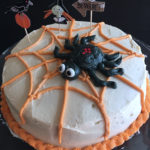
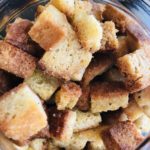
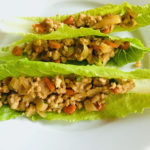

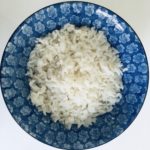
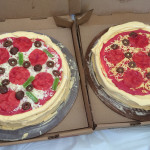
what people are talking about